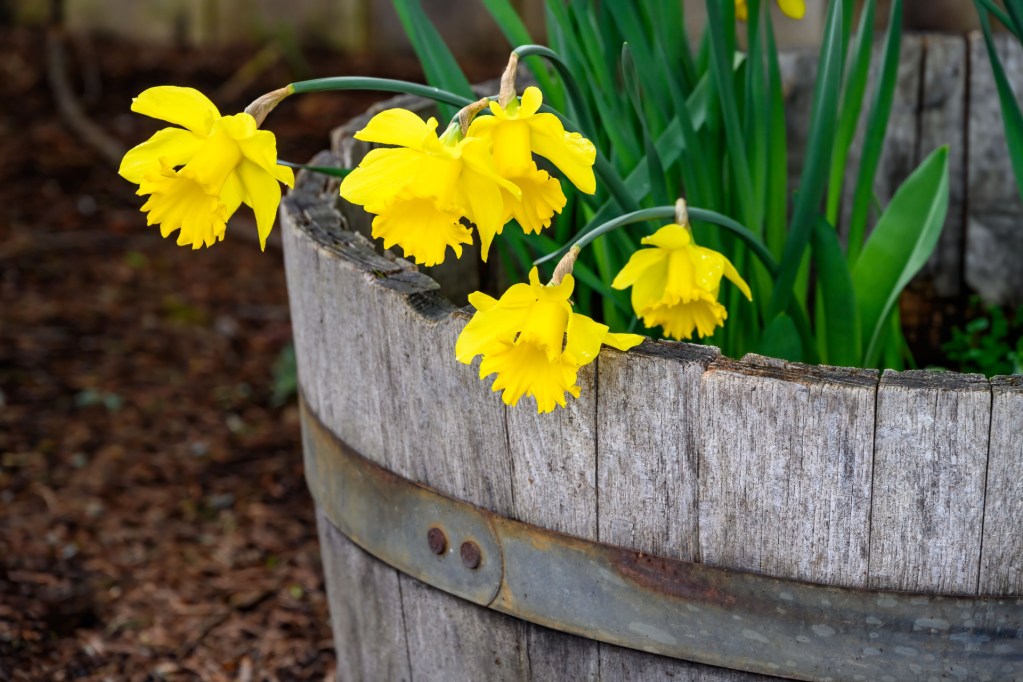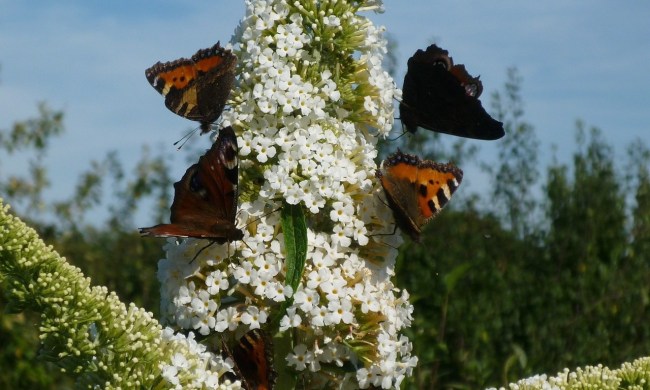Container gardens come in many different forms, making them a great way to express your individuality and creativity, as well as highlight the particular strengths of your plants. However, it can also be overwhelming. As you browse your local nursery or big-box store, you might come across a wide range of containers in all kinds of colors, shapes, and materials beyond basic plastic nursery pots or orange terracotta planters.
If you find yourself feeling lost with your many available options of flowers pots for your spring garden, we’ve got a handy guide to get you started on choosing the perfect flower containers. Whether you’re looking for a solid planter to help with geranium care, some small one that will show off your plants without taking up much room, or something that’s just plain interesting, we have you covered! Keep reading to find out what options there are for flower pots for your spring garden.
Hanging baskets

Hanging baskets can be one of the most gorgeous ways to display your garden flowers from a porch, patio, or gazebo. Your average hanging baskets can come in peat or plastic, but the most stunning form is perhaps metal baskets with coco coir liners.
These hanging baskets can be high maintenance, however. If you’re going down the metal frame and coco coir route, you want to stay on top of watering. Water can drain quickly out of coir, so you should use a water-retentive soil amendment (such as peat). It also helps to poke holes in a plastic sheet (for drainage) and line your coir with it before you add potting mix.
Low-maintenance flowers do well with this system. Geranium care will be easy, for example, because the blooms are showy without requiring much watering.
Metal tubs

Galvanized metal tubs can infuse your home garden with some rustic charm, and they’re incredibly easy to find — you might even be able to upcycle a container you have lying around. Because they’re relatively lightweight, you can also move them around easily. Plus, galvanized tubs tend to be pretty big, so you can even fit in small shrubs.
Keep in mind that metal does heat up easily during the summer, so you want to stay on top of watering your plants and providing them with shade if needed. Plus, you want to remember to create drainage holes in them. For a galvanized tub, consider Spanish lavender flowers, which are highly tolerant of heat and humidity.
Window boxes

Installing a window box can be an involved process, but the beautiful, cascading results are worth your effort. To attach a window box right beneath a window, you need to install a board with brackets to support your box. Make sure your window box has drainage holes, whether it’s made from wood, clay, or plastic — you could also line it with a screen to provide drainage. As for filling up the window box itself, you can use compost and potting mix.
It’s important to bear in mind the location of your window and what kind of light you’re getting. If you have your window box underneath an awning, you may need to account for partial shade — choose shade-loving blooms like impatiens flowers and periwinkle flowers. If your box is out in the full sun, you might want to mix in water-storing crystals to help with water retention. Arrange different foliage textures and flower colors to make your box pop.
Stackable planters

If you don’t have a lot of space to work with, a stackable planter system or a vertical planter tower is a solution worth exploring. Typically, stackable planters feature anywhere between three to six pockets. Some systems are more complex than others and may have poles and a water reservoir system. If you’re picking up stackable planters individually, you’ll need to create drainage holes yourself and support your planters with a central stake.
Petunia flowers make for great stackable planter blooms, as they feature relatively shallow roots. That said, the great thing about stackable planters is that you can plant multiple plants at once, so don’t be afraid to get creative.
Whiskey barrels

For some rustic, farmhouse charm, you can display your flowers in wooden whiskey barrels. They’re usually sold as half-barrels and are relatively easy to transport when you install casters onto them. Featuring wooden slats tied together by metal strips, these barrels aren’t usually prone to rotting, and they tend to be wide and deep for planting flowers — just make sure yours has a drainage hole.
With whiskey barrels, you want to remember to water your flowers regularly or set up a drip system for them. Tall flowers, such as established canna lilies, will look great in whiskey barrels.
Fluted containers

Fluted containers are essentially just your basic pot or planter, but they feature grooves that give them an artsy, elevated vibe. Often coming as ceramic, concrete, or plastic, they tend to be somewhat small, so they do best with stand-alone plants. You can display plants that don’t have very deep root systems — think pansy or dahlia flowers. Because fluted containers are usually small, your soil may dry out faster and require frequent watering.
Wall-mounted containers

If you like the aesthetic of hanging baskets but don’t have somewhere to hang them from, a wall-mounted container might be a better fit! While attaching a containter to a wall might sound complicated, it’s actually easier than ever. thanks to command strips and adhesive wall hooks.
If you want to hang a heavier container, such as a large ceramic pot, then you may need a more sturdy hook that needs to be drilled into the wall. However, smaller, lighter containers can often be hung using adhesive strips. To ensure that your wall-mounted container fits snuggly against the wall, choose one with a flat side. Test the container by holding it up against the wall with your hands before you start planting to avoid any unpleasant surprises, and make sure to clean and dry the wall thoroughly before you hang your container.
Now that you have an understanding of the most popular planters out there, you don’t have to default to terracotta or plastic containers for displaying your lovely blooms. Consider your environment and the flowers you want to plant to find the best containers. Selecting the right flower pots can spruce up your garden landscape and help your blooms thrive.




